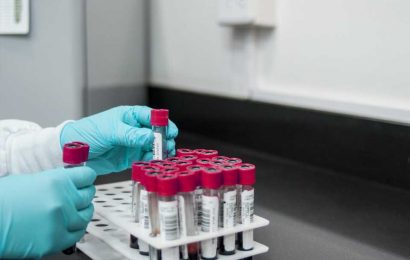
New research has uncovered the previously unknown presence of CD19—a B cell molecule targeted by chimeric antigen receptor (CAR) T cell immunotherapy to treat leukemia, lymphoma, and multiple myeloma—in brain cells that protect the blood brain barrier (BBB).
This discovery may potentially be the cause for neurotoxicity in patients undergoing CD19 directed CAR T cell immunotherapy, according to the research team led by Avery Posey, Ph.D., an assistant professor of Systems Pharmacology and Translational Therapeutics in the Perelman School of Medicine at the University of Pennsylvania and Research Health Science Specialist at the Corporal Michael J. Crescenz VA Medical Center in Philadelphia, PA. The study was published today in Cell.
“Our work has revealed that there is CD19 expression in a subset of cells that are, one, not B cells, and two, potentially related to the neurotoxicity we observe in patients treated with CAR T cell therapy targeting CD19,” Posey said. “The next question is, can we identify a better target for eliminating B cell related malignancies other than CD19, or can we engineer around this brain cell expression of CD19 and build a CAR T cell that makes decisions based on the type of cell it encounters—for instance, CAR T cells that kill the B cells they encounter, but spare the CD19 positive brain cells?”
As so often happens in scientific endeavors, the path to this discovery was made somewhat by chance. Kevin Parker, a Ph.D. student at Stanford and co-author on the paper, was at home analyzing previously published single cell sequencing data sets in his spare time. He found CD19 expression in a data set of fetal brain samples that looked odd, because the accepted wisdom was that CD19 only existed in B cells. So his lab reached out to the pioneers of CAR T cell immunotherapy, Penn Medicine.
“I suggested we test this as a preclinical model. When we treated the mouse model with CAR T cells targeting the mouse version of CD19, we found what looks like the start of neurotoxicities,” Posey said.
The team observed an increase in BBB permeability when mouse CD19 was targeted by CAR T cells, even in mice that lack B cells, but not when human CD19 was targeted as a control treatment (mice do not express human CD19).
“Even more interesting, this BBB permeability was more severe when the CAR T cells were fueled by a costimulatory protein called CD28 than when the CAR T cells used 4-1BB,” Posey said “This difference in the severity of BBB permeability correlates with what we know about the clinical observations of CAR T cell-related neurotoxicities—the frequency of patients experiencing high-grade neurotoxicity is lower for those that received the 4-1BB-based CAR T cells.”
His team sought to investigate the higher incidence of neurotoxicity in CD19-directed immunotherapies, compared to treatments targeting other B cell proteins, such as CD20. Notably, CD19 CAR T cells are sensitive to even low levels of CD19 antigen density, emphasizing the importance of identifying any potential reservoir of CD19 other than B cells.
The researchers’ discovery of CD19 molecules in the brain provides evidence that this increase in neurotoxicity is due to CD19-directed CAR T cell immunotherapies. Posey said, though, that generally this neurotoxicity is temporary and patients recover.
This research also highlights the potential utility of developing a comprehensive human single-cell atlas for clinical medicine. Sequencing is an unbiased, genome-wide measurement of gene expression that can capture even rare populations of cells. These rare cell types might otherwise be missed in measurements of bulk tissue due to their low frequency, but as this study demonstrates could be critically important in understanding the clinical effects of targeted therapy. While current CAR T cells recognize only a single antigen, future generations of CAR T cells may be able to discriminate between unique combinations of target antigens to improve their cell-type specificity. The researchers envision that a comprehensive database of gene expression across all human cell types will enable the precise identification of cell type-specific target antigens which can be used to design safe and effective cellular immunotherapies.
“That’s what we think one of the biggest take-home messages is,” Posey said. “The incredible usefulness of single cell atlas or single cell sequencing technology to determine whether a potential immunotherapy or drug target is going to be present somewhere in the body that we would not normally expect it based on conventional thought and whether this expression may lead to toxicity.”
CD19 is thought to be a lineage-restricted molecule—behaving in a functionally and structurally limited way. But this study shows that some small percentage of brain cells also express CD19.
Source: Read Full Article


